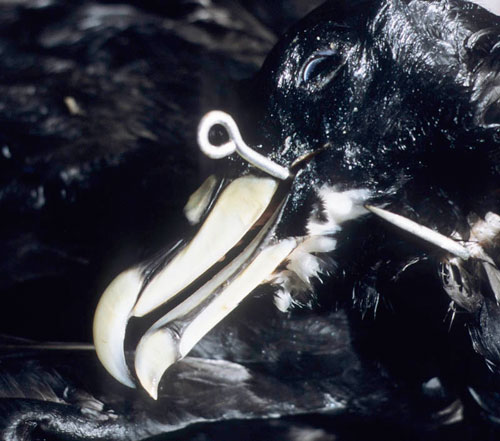ACAP’s Seabird Bycatch Group (SBWG) started three days of deliberations at its Sixth Meeting in Punta de Este, Uruguay today, fortunately without yesterday’s storms when its sister body, the Population and Conservation Status Working Group (PaCSWG), completed its own two days of meetings (click here). SBWG6 is being chaired by Anton Wolfaardt (Convenor, United Kingdom), assisted by Vice Convenors, Igor Debski (Department of Conservation, New Zealand) and Tatiana Neves (Projeto Albatroz, Brazil).
A full room with over 40 attendees from 11 Parties, including all the South American members of the Agreement, and several NGOs ensured full discussions of the first of no less than 58 meeting documents and information papers, facilitated by an excellent Spanish/English interpretation service. A few of the day’s highlights follow.
An ACAP review of “fly-back” injuries sustained by fishers in the course of using weighted lines (as a mitigation measure) in pelagic longlining garnered fifteen incidents, from bruises to, sadly, three fatalities. Use of sliding lead weights as developed in an Australian pelagic longline fishery has the potential to reduce the problem, one thought to be under-reported.
The meeting heard that “lazy line” usage that allows branch lines with baited hooks to trail behind the vessel during shallow-set longline hauling can cause albatross mortality in the North Pacific. It was suggested it was best to knock bait off the hooks (said to be easier for fish than for squid) before trailing the branch lines to solve this problem.

The problem: a hooked White-chinned Petrel, photograph by Nicolas Gasco
Following a question it was stated that no entanglements were observed when deploying the Hook Pod now under development for pelagic longline fisheries due to its fast sink rate. The pod’s primary purpose is to shield the baited hook from seabirds until it reaches a specific depth (click here).
Noting that trawling can also result in the death of albatrosses and petrels, the meeting heard of the Net Choke from New Zealand. This device aims to reduce seabird mortality during hauling by restricting the mouth of the trawl net when it nears the surface using a noose that can be winched tight. The meeting then closed for the day, although several break-out groups continued into the evening.
Click here to access the various papers that report on the above (and other) issues under consideration by SBWG6.
John Cooper, ACAP Information Officer, 11 September 2014

 English
English  Français
Français  Español
Español